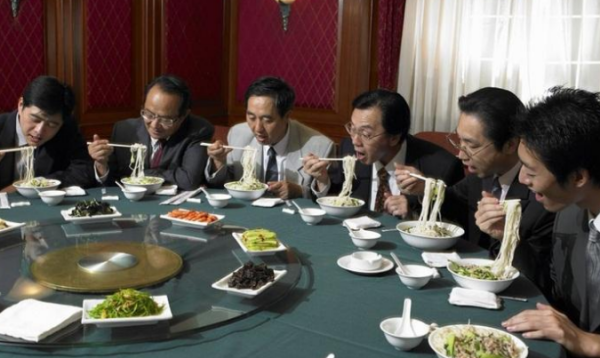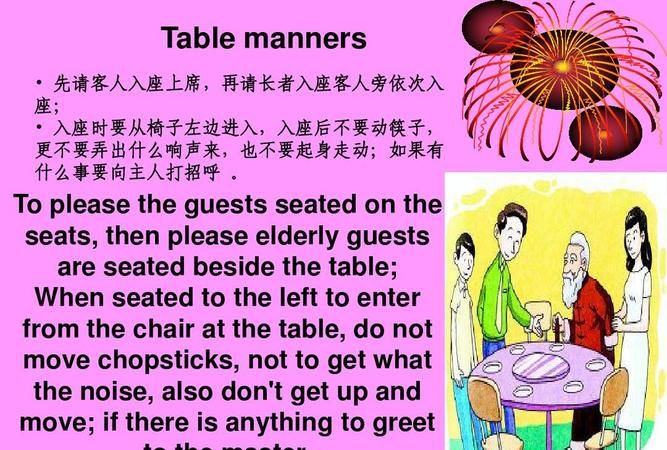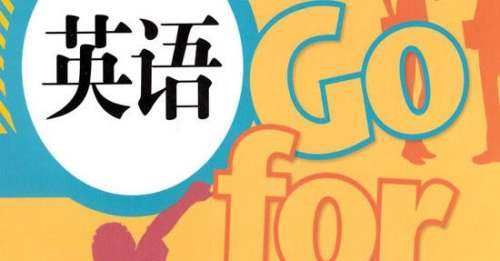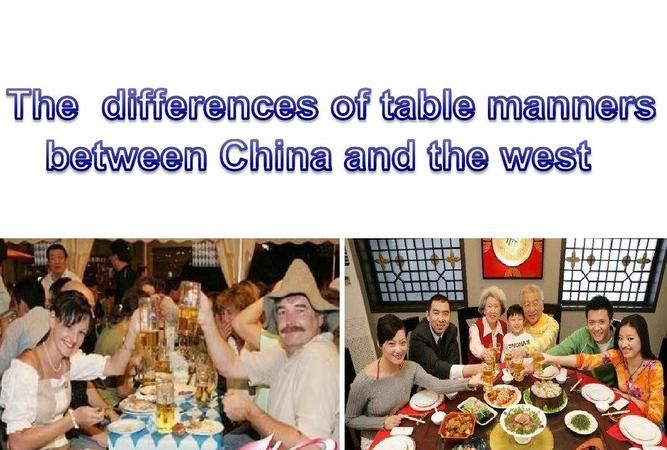本文目录
中国餐桌礼仪20条英语怎么写的
一、入座的礼仪。先请客人入座上席,再请长者入座客人旁依次入座,入座时要从椅子左边进入。入座后不要动筷子,更不要弄出什么响声来,也不要起身走动。如果有什么事要向主人打招呼(正对门口的为上座,一般是根据对方的身份地位来安排)。
The etiquette of taking a seat. First invite the guests to take a seat, and then invite the elderly to take a seat. Next to the guests, take a seat in turn. When taking a seat, enter from the left side of the chair. Don't move your chopsticks, make any noise,or get up and walk. If there is anything to say hello to the host (the one facing the door is the seat, which is generally arranged according to the identity of the other party)
二、进餐时,先请客人中长者动筷子。夹菜时每次少一些,离自己远的菜就少吃一些,吃饭时不要出声音,喝汤时也不要出声响,喝汤用汤匙一小口一小口地喝,不宜把碗端到嘴边喝。
When dining, please ask the elderly to move their chopsticks first. Eat less when you're far away from you. Don't make any noise when you eat, and don't make any noise when you drink soup. When you drink soup,take small mouthfuls with a spoon. It's not suitable to drink the bowl to your mouth. When the soup is too hot, drink it after it's cold. Don't drink it while blowing。
三、汤太热时凉了以后再喝,不要一边吹一边喝。有的人吃饭喜欢使劲咀嚼脆食物,发出很清晰的声音来,这种做法是不合礼仪要求的,特别是和众人一起进餐时,就要尽量防止出现这种现象。
Some people like to chew crisp food hard and make a clear voice when they eat. This practice is not in line with the etiquette requirements, especially when dining with people, we should try our best to prevent this phenomenon。

扩展资料
“餐桌礼仪”是一门很深刻的学问,它体现了一种儒家文化的传承,传播和精髓。比如,“尊老爱幼”,“长幼有序”在餐桌礼仪上就很讲究,我们都是先给长辈先盛饭,在给比自己年幼的盛饭,最后给自己盛饭。
再比如:从古至今很多重要的商业洽谈,重要决定,或是朋友间的相互往来,基本上都是和餐桌离不开的,所以餐桌礼仪至关重要。
中国古代就有所谓的站有站相,坐有坐相,吃有吃相,睡有睡相。这里说的进餐礼仪就是指吃相,要使吃相优雅,既符合礼仪的要求,也有利于我国饮食文化的继承和发展。
餐桌礼仪英语短语怎么写
看外国的餐桌礼仪用英文表达的话是如何的呢?你们觉得可以适应吗?下面是我给大家整理的餐桌礼仪 英语 短语 表达,供大家参阅!
餐桌礼仪英语(短语篇)
1) As soon as the hostess picks up her napkin(餐巾), pick yours up and lay it on your lap. Sometimes a roll of bread is wrapped in it; if so, toke it our and put it on your side plate.
2) The Soup Course
Dinner usually begins with soup. The largest spoon at your place is the soup spoon. It will be beside your plate at the right-hand side.
3) The Fish Course
If there is a fish course, it will probably follow the soup. There may be a special fork for the fish, or it may be similar to the meat fork. Often it is smaller.
4) The Meat Course
The main Course is usually served by the host himself, especially if it is a fowl(鸡禽) or a roast which need to be carved. He will often ask each guest what piece he prefers, and it is quite proper to state your preference as to lean or fat, dark(红肉) or light(白肉).
5) Using Knife and Fork
If you have English and American friends you will notice a few differences in their customs of eating. For the main or meat curse, the English keep the fork in the left hand, point curved downward, and bring the food to the mouth either by sticking the points onto it or in the case of soft vegetables, by placing it firmly on the fork in this position with the knife. Americans carve the meat in the same position, then lay down the knife and taking the fork in the right hand with the point turned up, push it under a small piece of food without the help of the knife and bring it to the moth right-side-up.
6) Helping Yourself and Refusing
If a servant passes food around, he will pass the dish in at your left hand so that you can conveniently serve yourself with your right hand. Never serve yourself while the dish is on your right; it is then the turn of your neighbor on the right. It is polite to take some of everything that is passed to you. But if there is something you may not like, you may quietly say: "No thank you."
7) Second Helpings
The hostess may or may not ask if you would like a second helping, according to the formality of the meal. If she does and you accept it, you should pass your plate to her or to the servant with the knife and fork still lying on it.
餐桌礼仪英语(例句篇)
(1)、自己想做某些事情时,用May I ~ ? 想问不知道该不该问的问题时,用May I know?
May I have your name, please?
请问贵姓?
May I have your check out time, please?
请问您什么时候结帐退宿?
May I see your passport, please?
我可以看一下您的护照吗?
(2)、有求于客人时,用Could you ~ ?
Could you fill out the form, please?
请填写这张表格好吗?
Could you write that down, please?
请写下来好吗?
Could you hold the line, please?
请不要挂断电话好吗?
以上这类情况如果用Would you ~ ? 来问,就变成上级对下级说话的口气,带有质问对方的意思,不适合酒店服务人员使用,所以应特别留意。
(3)询问客人的喜好或意愿时,用Would you ~ ?
Would you like tea or coffee?
您要茶还是咖啡?
Would you like to take a taxi?
您需要出租车吗?
Would you mind ~ ing?
您介意 ~ 吗?
下列为“疑问词 + Would you ~ ?”的句型,只能用于询问客人的希望。
When would you like to visit the Jade Buddha Temple?
您什么时候参观玉佛寺?
Where would you like to have lunch?
您想去哪里吃午餐?
What time would you like to eat?
您想要什么时候用餐?
Who would you like to contact?
您想和谁联系?
Why would you like to visit Hong Kong?
您为什么想去香港?
Which kind of room would you prefer?
您喜欢哪一种房型?
Which museum would you like to visit?
您想去参观哪一间博物馆?
How would you like to settle your bill?
您想用什么方式付帐?
How long would you like to stay?
您住多久?
How many tickets would you like to buy?
您要买几张票?
餐桌礼仪英语( 句子 篇)
民以食为天,吃饭是生活中必不可少的一件事。而在家吃饭和在餐厅吃饭会说的话也不同,那么跟吃饭有关的事情用英语怎么说呢?看完这篇 文章 ,相信你对吃饭点餐可以轻车熟路了。
[1] 干杯怎么说
[2] 在家请客招待客人
[3] 在餐厅吃饭的英语
[4] 餐厅英语会话
每逢佳节聚会,英美人常欢聚一堂,频频举杯,开怀畅饮,“干杯!”、“为……干杯!”之声不绝于耳。那么英美人是如何表示的呢?
一、用(Here's)to...表示:
1.Here's to your health / success. 为你的健康 / 成功干杯!
2.Here's to our friendship! 为我们的友谊干杯!
3.Here's to Tom for his new job! 为汤姆的新工作干杯!
二、用health, luck等表示:Good health! Good luck! All the best!例如:
1.Your health, John—May you have a successful time in Manchester!为了你的健康,约翰,也祝你在曼彻斯特前程似锦!
2.Helen raised her glass,“Good luck to you!” she said. 海伦举起酒杯,说道:“祝你好运!”
三、主人或主持人邀客人喝酒时,通常用Cheers! Do the honors!例如:
1.He raised his glass,“May you success! Cheers!” 他举起酒杯说:“祝你成功,干杯!”
2.Pat, you do the honors and propose the toast. 帕特,你敬酒吧。
四、在比较随便的场合,通常用Here's how!还有Happy landing!(美俚,原为空军用语)等。例如:
Oh,come, come,David.Here's how!噢,来呀,来呀,大卫,干杯!
五、在比较正式的场合,英美人有时也用一些外来语。例如:
Prosit!(来源于拉丁语,意为May it do good! To your health/ good luck! etc. )
六、在陈述句中,英美语通常用toast,round, drink to,drink a toast for / to, propose a toast for 等词表示。例如:
1.Friends,I'll give you a toast——to our president! 朋友们,我给大家敬酒,为我们总统干杯!
2.I now propose a toast to the friendship between our two people——to our friendship. 现在,我提议为我们两国人民的友谊干杯!
You would no doubt be interested in Chinese cooking.
你一定喜欢中国菜。
Dinner is ready. Please come to the table.
饭菜好了,请入席。
What would you like to drink?
你要喝什么?
Mr. Taylor, which do you prefer, beer or wine?
Mr. Taylor,你要啤酒还是葡萄酒。
Wouldn't you care for something a little stronger?
你不介意喝点烈酒吧?
Here's to our friendship and to your health, Cheers!
为我们的友谊和您的健康,干杯!
Ah, here come the egg rolls.
Ah,上春卷儿了。
It tastes best when taken piping hot.
趁热吃好吃。
Have some more, please.
请再来点儿。

中国的餐桌礼仪英语翻译
各国餐桌礼仪英语翻译
在法国,你完全可以用两只手吃饭——用刀叉或者是叉子加面包。面包在这里并不是开胃菜——而是帮助把食物弄到叉子上面的工具。吃面包的时候,慢慢的撕下,千万别直接对着面包咬。不用的.时候,面包是放在桌子或是桌布上的,别放在盘子里。以下是我为大家整理分享的各国餐桌礼仪英语翻译,欢迎阅读参考。

各国餐桌礼仪英语翻译
Dining Etiquette
Dining while abroad can feel as though you are tiptoeing around a minefield of unfamiliar rules. Table manners are the ultimate way to show respect (or some accidental disrespect) to your gracious host.
在国外吃饭,宛如蹑手蹑脚的游走在一堆不熟悉的规则中间。餐桌礼仪是对主人展现尊敬(有时反而显现不敬)的最好方式。
Slurp your food.
吃东西时砸吧嘴。
In Japan, most commonly when eating noodles and soups, slurping shows your appreciation of the food to the chef. The louder the better! You may also drink directly from the soup bowl -- spoons are uncommon. Furthermore, never cross your chopsticks, lick your chopsticks, or stick your chopsticks vertically into a bowl of rice. Its considered very rude in Japan and many other Asian countries, including China.
在日本,吃面喝汤极其寻常,发出啧啧声是对厨师食物的肯定。越大声越好!你还可以直接端起汤碗来喝汤——调羹反而用的不多。另外,千万别把筷子交叉,舔筷子或是把筷子垂直插在米饭中间。这在日本以及其他亚洲国家包括中国,都是极其粗鲁的表现。
Eat only with your right hand.
只用右手吃饭。
Sorry lefties -- in India, the Middle East, and some parts of Africa, it is considered unclean to eat with your left hand.
左撇子对不住啦——在印度、中东以及非洲某些地区,用左手吃饭是不卫生的表现。
Dont offer to split the bill.
别想着AA制。
In France, splitting the bill is considered the height of unsophistication. Offer to pay the bill in its entirety or someone else will.
在法国,AA制被看成不懂人情世故。要么就请客,不然就等别人买单吧。
Bread is a utensil.
面包只是食具。
In France, you are supposed to use two hands to eat -- either fork and knife or fork and bread. Bread isnt meant to be an appetizer -- instead it serves to assist the food to the fork. When you eat the bread, tear off a piece of it to eat instead of biting directly into the bread. When not in use, the bread belongs on the table or tablecloth instead of the plate.
在法国,你完全可以用两只手吃饭——用刀叉或者是叉子加面包。面包在这里并不是开胃菜——而是帮助把食物弄到叉子上面的工具。吃面包的时候,慢慢的撕下,千万别直接对着面包咬。不用的时候,面包是放在桌子或是桌布上的,别放在盘子里。
Dont touch any part of your meal with your hands.
不要用手碰到任何食物。
In Chile, touching food with your hands is considered ill-mannered. Yep, even fries! In Brazil, too, pizza and burgers are normally eaten with a fork and knife.
在智利,用手碰食物是非常不礼貌的表现。是的,甚至是薯条!而在巴西亦是如此,披萨和汉堡通常都是用刀叉吃的。
Dont put food in your mouth with a fork.
不要用叉子把食物放在嘴里。
In Thailand, forks are used to push food into a spoon. Also, its unusual to use chopsticks -- theyre considered tacky.
在泰国,一般都是用调羹吃东西,用筷子都是很奇怪的——会被看成没有教养。
;西方餐桌礼仪英文常用语大全
TABLE MANNERS AT A DINNER PARTY:
People who go to a formal Western dinner party for the first time may be surprised by table manners in Western culture.Knowing them will help you make a good impression.Having good table manners means knowing,for example,how to use knives and forks,when to drink a toast and how to behave at the table.Beside your napkin you will find a small bread roll and three glasses—one for white wine,one for the red wine,and one for water.There are two pairs of knives and forks on the table,forks on the left and knives in the right of the plate.When you see two spoons,the big one id for the suop and the samll one for the dessert.The knife and fork that are closest to your plate are a litte bit bigger than the ones beside them.When you sit down at the table, you can take your napkin, unfold it and put it on your lap.In Chinese you sometime get a hot,damp cloth to clean your face and face and hands,whinch,however,is nat the custom in Western countries.
Dinner start with a small dish, which is often called a starter.Sime people pray before they start eating , and other people may keep silent for a moment. Then you can say"Enjoy your meal"to each other and everybody start eating.For the starter,which you eat with the smaller pair,you keep the knife in your right hand and the fork in your left.After the starter you will get a bowl of soup—but only one boel of soup and never ask for a seconf serving.
The next dish is the main course.Many Westerners think the chicken breast with its tender white flesh is the best part of the bird. Some people can use their fingers when they eating chicken or other birds,but never touch beef or other meat in bones.It is polite to finish eating everthing on your plate,so don't take more food than you need.
At table ,you should try to speak quietly and smile a lot,but do not laugh all the time.
Most Westerners like soft drink if they will drive home.Many of them drink white or red wine with the food.When drinking to someone's health,you raise your glasses,but the glasses should not touch. The custom of toasting in some parts of China is to finish the drink at once,but Westerners usually take only a sip.For drinking during a dinner,the best advic is never to drink too much.
Table manners change over time.They follow the fashion of the day .Beside,table manners are only important at formal dinner parties.If you're not sure what to do ,you can always follow your hosts.Although good manners always make you look good,you do not need to worry about all these rules while having dinner with your friends or family.

以上就是关于关于餐桌礼仪的英语词汇 ,中国餐桌礼仪20条英语怎么写的的全部内容,以及关于餐桌礼仪的英语词汇 的相关内容,希望能够帮到您。

